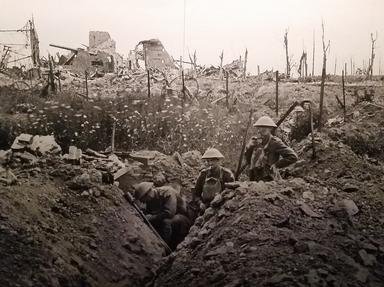9. During which battle did Lt. John McCrae write his famous poem "In Flanders Field"?
From Quiz Canada, 1914-1918
Answer:
Ypres
The Canadians had a rough go of it during Second Ypres (April-May 1915). The Patricias and the 1st Canadian Division were subjected to the first widescale use of chlorine gas and suffered a great number of casualties, but they held the line and prevented a German breakthrough. In their first major engagement at the front, the Canadians proved themselves to be a tough bunch who could hold their own very well.
McCrae was a doctor, and he treated thousands of wounded men in the Ypres salient (in Flanders). After a friend of his was killed, McCrae penned the famous poem:
"In Flanders fields, the poppies blow
between the crosses, row on row
that mark our place; and in the sky
the larks, still bravely singing, fly
scarce heard amid the guns below.
We are the dead - short days ago
we lived, felt dawn, saw sunset glow,
loved and were loved, and now we lie
in Flanders fields.
Take up our quarrel with the foe:
to you from failing hands we throw
the torch - be yours to hold it high.
If ye break faith with us who die,
we shall not sleep, though poppies grow
in Flanders fields."




 Quick Question
Quick Question Top 10% Rated Quiz,
Top 10% Rated Quiz,
 Top 20% Rated Quiz,
Top 20% Rated Quiz,
 A Well Rated Quiz
A Well Rated Quiz